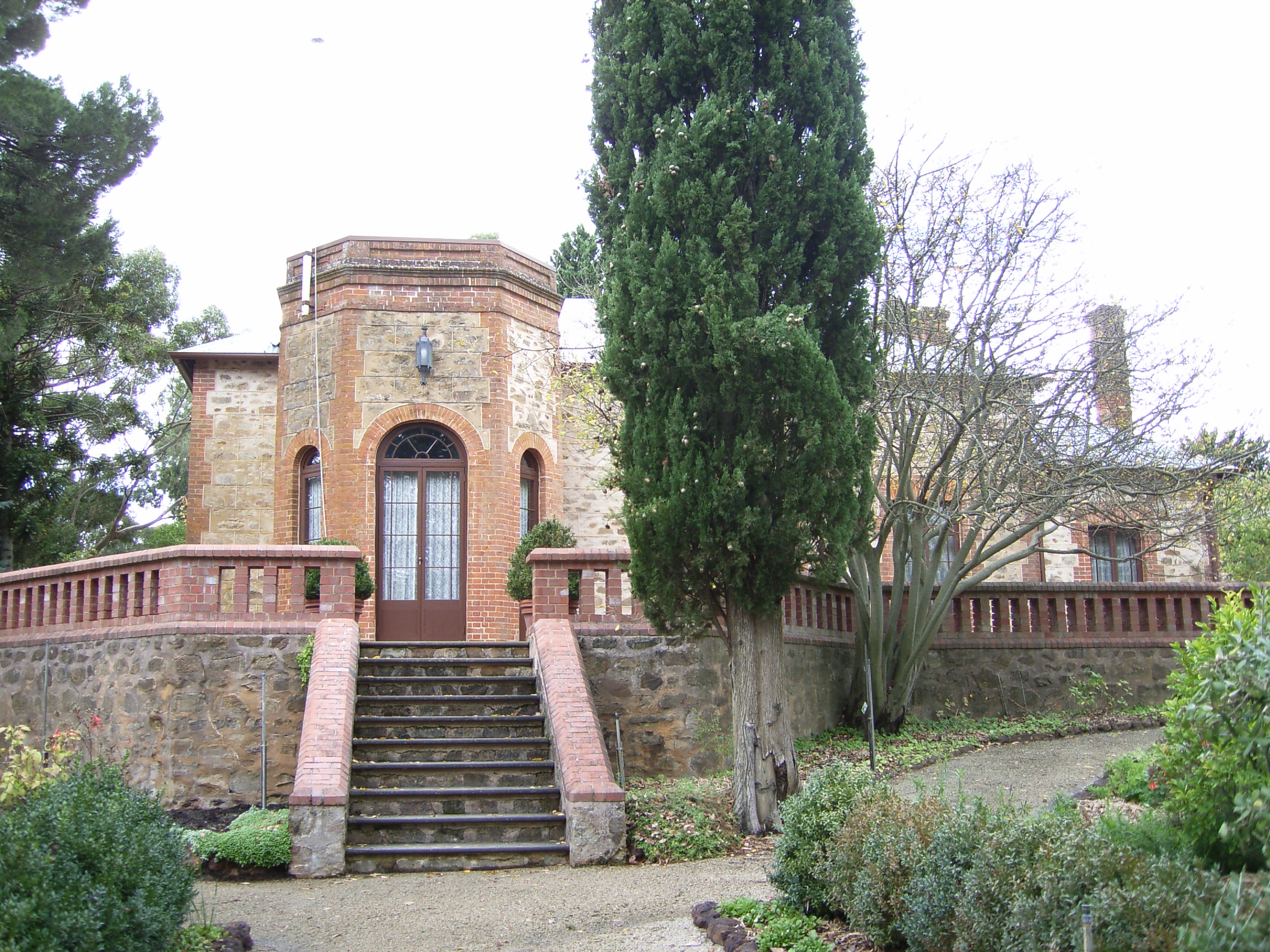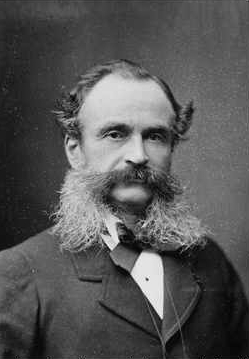|
Belair, South Australia
Belair is a suburb in the south eastern foothills of Adelaide, South Australia at the base of the Mount Lofty Ranges. Name Before European settlement, the Kaurna people called the area of modern-day Belair "piraldi". One early European name for the area was Sleep's Hill, named after Samuel Sleep, a shepherd who came to South Australia in the 1830s. The origin of the modern name "Belair" is uncertain. Gustav Ludewigs, who subdivided the area, may have named the suburb after Bel Air, Martinique, being his wife Maria's birthplace. Another theory is that it was named in 1849 after Eugene Bellairs, a Government surveyor who lived in the area. History The area was used by the Kaurna and Peramangk people for seasonal hunting and gathering. The trees provided gum resin for food and bark for shelter construction, and possums and bandicoots were hunted for food and for their skins to be used in cloaks. Government Farm The first known European settler in Belair was a squatter named Nic ... [...More Info...] [...Related Items...] OR: [Wikipedia] [Google] [Baidu] |
Electoral District Of Waite
Waite is a single-member electoral district for the South Australian House of Assembly. Named after Peter Waite, a 19th century entrepreneur and philanthropist, it covers 75.4 km² of suburbs and foothills in Adelaide's inner south-east, taking in the suburbs of Belair, Blackwood, Brown Hill Creek, Coromandel East, Coromandel Valley, Crafers West, Craigburn Farm, Eden Hills, Glenalta, Hawthorndene, Kingswood, Lynton, Mitcham, Netherby, Springfield, Torrens Park, Urrbrae as well as part of Upper Sturt. Waite was created in the 1991 electoral distribution as a comfortably safe Liberal seat, replacing the abolished district of Mitcham, the only single-member lower house seat anywhere throughout Australia to be won by the Democrats. At the 1993 election, Mitcham's last member, Liberal deputy leader Stephen Baker, easily retained it amid that year's decisive Liberal victory. Baker served as Treasurer from 1993 to 1997. Upon his retirement at the 1997 election, h ... [...More Info...] [...Related Items...] OR: [Wikipedia] [Google] [Baidu] |
Martinique
Martinique ( , ; gcf, label=Martinican Creole, Matinik or ; Kalinago: or ) is an island and an overseas department/region and single territorial collectivity of France. An integral part of the French Republic, Martinique is located in the Lesser Antilles of the West Indies in the eastern Caribbean Sea. It has a land area of and a population of 364,508 inhabitants as of January 2019.Populations légales 2019: 972 Martinique INSEE One of the Windward Islands, it is directly north of Saint Lucia, northwest of |
Belair Railway Station
Belair railway station is located on the Adelaide to Melbourne line in the Adelaide southern foothills suburb of Belair, 21.5 kilometres from Adelaide station. It is the terminus for Adelaide Metro's Belair line service. Adelaide Metro 12 October 2014 History Belair station opened in 1883 with the opening of the to section of the[...More Info...] [...Related Items...] OR: [Wikipedia] [Google] [Baidu] |
Aldgate Railway Station, Adelaide
Aldgate railway station was located on the Adelaide-Wolseley line in the Adelaide Hills suburb of Aldgate, 34.9 kilometres from Adelaide station. History Aldgate station opened on 14 March 1883, and on 23 December 1886, a second platform was added. From 1 May 1910, most services from Adelaide station were extended to terminate at Aldgate. On 1 July 1929, the westbound platform was converted to an island platform. In 1974, the goods siding was replaced by a second crossing loop. It was very similar to Blackwood; the station building and shelter were the same. It was closed to local trains on 23 September 1987, but until 1990 was available for passengers wishing to board the Mount Gambier-bound railcar service. At the time of closure, Aldgate had three platforms. Platform 1 was a 151-metre-long side platform, and platforms 2 and 3 were a 149-metre-long island platform. The island platform was demolished in the 1990s, but the side platform remains in place, although no long ... [...More Info...] [...Related Items...] OR: [Wikipedia] [Google] [Baidu] |
Nairne, South Australia
Nairne is a small township in the Adelaide Hills of South Australia. Nairne is about from Mount Barker, South Australia, in the federal Division of Mayo and in the state electoral district of Kavel. At the 2016 census, Nairne had a population of 4,842. History Nairne was founded by Matthew Smillie in 1839 and named for his wife's family. In 1854 the District Council of Nairne was established to govern local affairs of the town and its surrounds extending past Callington to the east. Chapman's Bacon Factory was founded in Nairne in 1899 by the Chapman family and was closed in 2002 and has since been developed into a successful and thriving complex including a supermarket, post office and several variety shops. In the late 1920s, the route of the Princes Highway, part of the main road route between Adelaide and Melbourne was changed to pass through Nairne, with road improvements from Mount Barker through Nairne to Kanmantoo. In turn, the route through Nairne became the '' ... [...More Info...] [...Related Items...] OR: [Wikipedia] [Google] [Baidu] |
North Adelaide
North Adelaide is a predominantly residential precinct and suburb of the City of Adelaide in South Australia, situated north of the River Torrens and within the Adelaide Park Lands. History Surveyor-General Colonel William Light of the colony of South Australia completed the survey for the capital city of Adelaide by 10 March 1837. The survey included , including north of the River Torrens. This surveyed land north of the river became North Adelaide. North Adelaide was the birthplace of William Lawrence Bragg, co-recipient of the Nobel Prize for Physics in 1915. It contains many heritage-listed buildings, including the North Adelaide Post Office. Design North Adelaide consists of three grids of varying dimension to suit the geography. North Adelaide is surrounded by parklands, with public gardens between the grids. The North Adelaide park lands (the Adelaide Park Lands north of the River Torrens) contain gardens, many sports fields (including the Adelaide Oval), a ... [...More Info...] [...Related Items...] OR: [Wikipedia] [Google] [Baidu] |
Port Adelaide
Port Adelaide is a port-side region of Adelaide, approximately northwest of the Adelaide city centre, Adelaide CBD. It is also the namesake of the City of Port Adelaide Enfield council, a suburb, a federal and state electoral division and is the main port for the city of Adelaide. Port Adelaide played an important role in the formative decades of Adelaide and South Australia, with the port being early Adelaide's main supply and information link to the rest of the world. Its Kaurna name, although not officially adopted as a dual naming, dual name, is Yartapuulti. History Prior to European settlement of South Australia, European settlement Port Adelaide was covered with Avicennia marina, mangrove swamps and tidal mud flats, and lay next to a narrow creek. At this time, it was inhabited by the Kaurna people, who occupied the Adelaide Plains, the Barossa Valley, the western side of the Fleurieu Peninsula, and northwards past Snowtown. The Kaurna people called the Port Adelaide a ... [...More Info...] [...Related Items...] OR: [Wikipedia] [Google] [Baidu] |
Adelaide Plains
The Adelaide Plains (Kaurna name Tarndanya) is a plain in South Australia lying between the coast ( Gulf St Vincent) on the west and the Mount Lofty Ranges on the east. The southernmost tip of the plain is in the southern seaside suburbs of Adelaide around Brighton at the foot of the O'Halloran Hill escarpment with the south Hummocks Range and Wakefield River roughly approximating the northern boundary. Traditionally entirely occupied by the Kaurna (indigenous) people, the Adelaide Plains are crossed by a number of rivers and creeks, but several dry up during summer. The rivers (from south to north) include: the Onkaparinga/Ngangki, Sturt/Warri Torrens/Karra Wirra, Little Para, Gawler, Light/Yarralinka and Wakefield/Undalya. The plains are generally fertile with annual rainfall of about per year. The plain can be roughly divided into three parts. The southern area is now covered by the city of Adelaide, the capital of South Australia. The central area is considered the ... [...More Info...] [...Related Items...] OR: [Wikipedia] [Google] [Baidu] |
Marble Hill, South Australia
Marble Hill was the Vice-Regal summer residence for the Governor of South Australia for seventy-five years, from 1880 to 1955. It is also the name of a ward of the Adelaide Hills Council, and a suburb, both named after the residence and in which the residence is located. It is about east of Adelaide between the towns of Ashton and Cherryville, and has expansive views of the Adelaide Hills to the North and East, and the Adelaide Plains to the West. The residence was destroyed during the Black Sunday bushfire of 1955. Subsequently, the site was managed by the National Trust of South Australia from 1967 to 1992, and the Department for Environment and Heritage from 1992 to 2009. A volunteer Friends of Parks group, Friends of Marble Hill, ran open days and maintained the site from 1994 to 2008. To date, the main building has never been fully restored, but the National Trust undertook restoration of the tower and the nearby stables in the 1970s. Successive State Governments hav ... [...More Info...] [...Related Items...] OR: [Wikipedia] [Google] [Baidu] |
Governor Of South Australia
The governor of South Australia is the representative in South Australia of the Monarch of Australia, currently King Charles III. The governor performs the same constitutional and ceremonial functions at the state level as does the governor-general of Australia at the national level. In accordance with the conventions of the Westminster system of parliamentary government, the governor nearly always acts solely on the advice of the head of the elected government, the Premier of South Australia. Nevertheless, the governor retains the reserve powers of the Crown, and has the right to dismiss the Premier. As from June 2014, the Queen, upon the recommendation of the Premier, accorded all current, future and living former governors the title 'The Honourable' for life. The first six governors oversaw the colony from proclamation in 1836, until self-government and an elected Parliament of South Australia was granted in the year prior to the inaugural 1857 election. The first Austra ... [...More Info...] [...Related Items...] OR: [Wikipedia] [Google] [Baidu] |
Old Government House, South Australia
Old Government House is an historic building located in Belair National Park, South Australia, and was South Australia's first official vice-regal summer residence of the Governor of South Australia from 1860 to 1880, and was used by governors Richard Graves MacDonnell (1855–62), Dominick Daly (1862-68) and William Jervois (1877–80). It was constructed from local sandstone, with the red-brick for the quoins sourced from the Blackwood brickworks, and a native timber shingle roof. The residence's indoor plunge-pool was reportedly the first in the colony. History Government Farm Within a few years of the settlement of South Australia, the colonial government decided to establish a "Government Farm" for the purpose of agisting horses and bullocks, and providing hay and fodder. The area chosen was the upper reaches of the Sturt River; In addition to its suitability as farmland, governor George Gawler thought the area would be ideal for the establishment of a summer residen ... [...More Info...] [...Related Items...] OR: [Wikipedia] [Google] [Baidu] |

.jpg)

